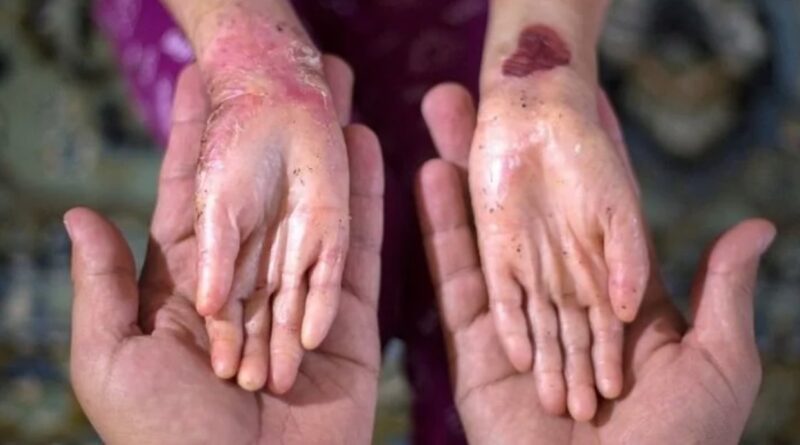First Human Skin Map Provides ‘Recipe’ That Could Prevent Scarring And Facilitate Hair Transplants

Skin is the largest organ of the human body, measuring on average two square meters. It provides a protective barrier, regulates our body temperature and can regenerate itself.
But I bet you didn’t know that skin develops in the sterile environment of the womb, with all hair follicles formed before birth. (There is follicle cycling after birth, but no new follicles are made.)
Most importantly for the scientists behind a new report, before birth is when the skin has the unique ability to heal without scarring.
Now, for the first time, researchers have created a single cell atlas of prenatal human skin to understand how skin forms, and what goes wrong in disease—insights that could be used to create new hair follicles in regenerative medicine and transplants for burn victims.
Researchers from the Wellcome Sanger Institute at Newcastle University and their collaborators used single cell sequencing and other genomics techniques to create the atlas and uncover how human skin, including hair follicles, is formed.
For the study, published in Nature, the team also created a ‘mini organ’ of skin in a dish with the actual ability to grow hair.
Using the ‘organoid’, they showed how immune cells play an important role in scarless skin repair, which could lead to clinical applications to prevent scarring after surgery, or scarless healing after wounding.
“With our prenatal human skin atlas, we’ve provided the first molecular ‘recipe’ for making human skin and uncovered how human hair follicles are formed before birth,” said Dr. Elena Winheim, co-first author from the Wellcome Sanger Institute.
MORE CELLULAR BREAKTHROUGHS: Lab-Grown Blood Stem Cells Could Replace Bone Marrow Donations for Transplants
As part of the Human Cell Atlas, which is mapping all cell types in the human body to transform understanding of health and disease, the research futhers our understanding how skin develops, where cells are in space and time, and the role of genetics in revealing how specific mutations cause congenital skin disorders, such as blistering disorders and scaly skin.
The team used samples of prenatal skin tissue, which they broke down to look at individual cells in suspension, as well as cells in place within the tissue. Scientists used cutting-edge single-cell sequencing and spatial transcriptomics to analyze individual cells in space and time, and the cellular changes that regulate skin and hair follicle development.
They described the steps that outline how human hair follicles are formed and identified differences from mouse hair follicles. (One reason it’s so difficult to study how human skin develops, is that animal models are starkly different.)
They compared the molecular characteristics of skin organoids with prenatal skin and found the skin organoid model more closely resembled prenatal skin than adult skin.
AMAZING WORK: New Stem Cell Injection Treatment Shows Promise for Halting Multiple Sclerosis
The team found that blood vessels did not form in the skin organoid as well as in prenatal skin. But, by adding immune cells known as macrophages to the organoid, they discovered, with the use of 3D imaging, that the macrophages promoted the formation of blood vessels.
It’s known that these immune cells protect the skin from infection. However, this is the first time that macrophages have been shown to play a key role in the formation of human skin during early development by supporting the growth of blood vessels. This offers an option to improve vascularization of other tissues, which could lead to clinical applications to avoid scarring after surgery or wounding.
“These insights have amazing clinical potential and could be used in regenerative medicine, including offering skin and hair transplants—such as for burn victims or those with scarring alopecia,” said Dr. Winheim.
RELATED GOOD NEWS: FDA Approves First Alopecia Drug That Restores Hair Growth in Many Patients
“We’re excited to have made a skin organoid model that grows hair. In this process, we uncovered a new, important role of immune cells in promoting the growth of blood vessels,” said Dr. Hudaa Gopee, co-first author from Newcastle University. “Our findings could inform clinical advances to avoid scarring after surgery.”
Find out more on how the team grows skin organoids in the lab, in this Sanger Institute blog article.

